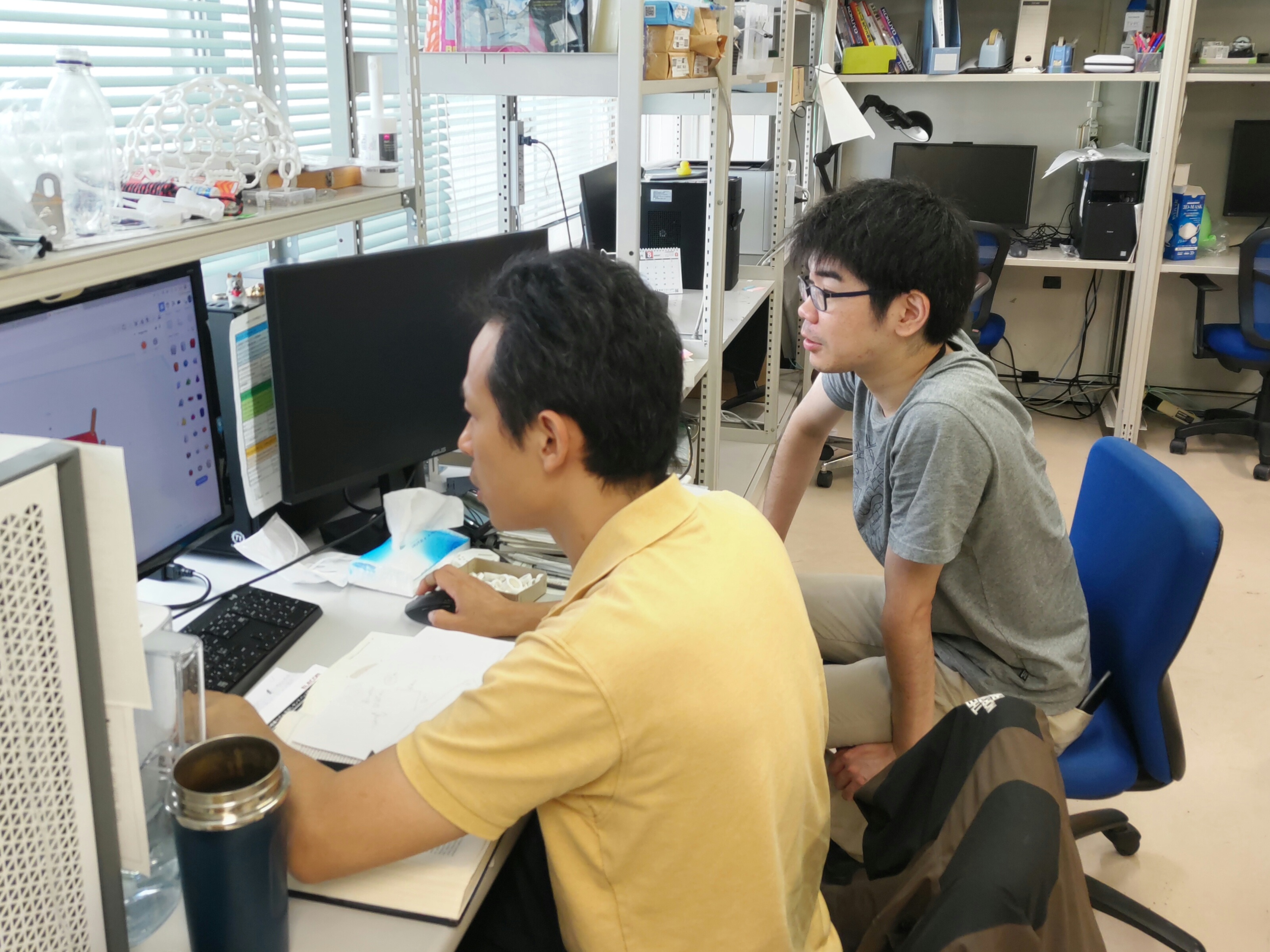医科学専攻
- Master's Courses
修士課程 - Doctoral Courses
博士課程
Physiology生体システム生理学
STAFF
Professor
-
Takahashi, MayuProfessor.M.D., Ph.D. 髙橋 真有 教授

Other Faculty / Staff
-
Chen Chih-Yang
Lect.Ph.D. Chen Chih-Yang 講師
CONTACT
TEL:下記メールアドレスにご連絡ください
E-MAIL:pysiolosy*grp.tohoku.ac.jp
(「*」を「@」に変換してください)
OUTLINE
Why do we move our eyes? In daily life, our eyes move three to four times every second, yet the neural and cognitive processes that lead to the selection of where we will look next, and then execute the appropriate eye movement, are entirely unconscious and automatic. We, like other animals, move our eyes, heads, and bodies in the world to direct our sensory organs to targets in the world that our brains deem important. Much like walking or reaching to pick up a cup, we take this amazing ability for granted – until something causes it to break.
Our primary focus is on the mechanisms, representations, and transformations that make the abovementioned function possible. We investigate these questions using intricate behavioral, cognitive, and neurophysiological studies applied to appropriate animal species or humans as necessary. This question – of what attention is and how it is implemented and why it works – is of great interest not only from the point of view of understanding the anatomy and physiology, but also for its application in medicine and artificial intelligence. There is also a strong expectation that understanding the principles of the “simpler” visuo-ocular-motor control system will give us hints into how the brain organizes more “complex” perceptual and motor control systems.
動物は、外界からの感覚情報を分析し運動情報に変換して適切な行動を行い、環境に適応し生存しています。この「感覚-運動情報変換」は、脳の広く異なる領域で分散的、階層的な秩序で行われており、四肢を含む全ての随意運動制御に必須で脳の最も重要な機能の一つです。これまで、高等哺乳類の眼球運動系をモデルとして、「視覚情報から眼球運動情報への脳内変換機構」の問題に取り組んできました。ヒトやサルは、感覚入力のうち約80%を視覚に依存していて、視覚情報を取り込むため脳は異なる5種類の眼球運動系を無意識に使い分け、「対象への視線の移動」と「視野の安定化」を実現します。この異なる眼球運動系を駆使して、視覚情報を正しく脳内に取り込み、それを用いて、正しい運動出力を脳のどこでどのように計算して正確な運動が生成されるのかを、non-human primateで神経生理学的と解剖学的方法で解析しています。外部座標で得られた視覚情報は、網膜座標を介して身体内部座標に変換され、脳内での座標変換を繰り返し出力眼球運動指令情報に変換されます。この過程で異なる眼球運動系の座標間の変換を必要としない共通基準座標が使用されていると考え、その解明を目指しています。
ARTICLE
Takahashi M, Sugiuchi Y, Shinoda Y. Brainstem neural circuits for triggering vertical saccades and fixation. J. Neuroscience 44(1): e1657232023, 2024.
URL:https://www.jneurosci.org/content/44/1/e1657232023
Takahashi M, et al. Brainstem neural circuits triggering saccades and fixation. J. Neuroscience 42: 789-803, 2022.
URL:https://www.jneurosci.org/content/42/5/789
Takahashi M, Shinoda Y. Brain stem neural circuits for horizontal and vertical saccade systems and their frame of reference. Neuroscience 392: 281-328, 2018.
URL:https://www.sciencedirect.com/science/article/pii/S0306452218305724?via%3Dihub
Takahashi M, Sugiuchi Y, Shinoda Y. Convergent synaptic inputs from the caudal fastigial nucleus and the superior colliculus onto pontine and pontomedullary reticulospinal neurons. J. Neurophysiology 111: 849-867, 2014.
URL:https://journals.physiology.org/doi/full/10.1152/jn.00634.2013
Takahashi M, et al. Commissural excitation, and inhibition by the superior colliculus in tectoreticular neurons projecting to omnipause neuron and inhibitory burst neuron regions. J. Neurophysiology 94:1707-1726, 2005.
URL:https://journals.physiology.org/doi/full/10.1152/jn.00347.2005

